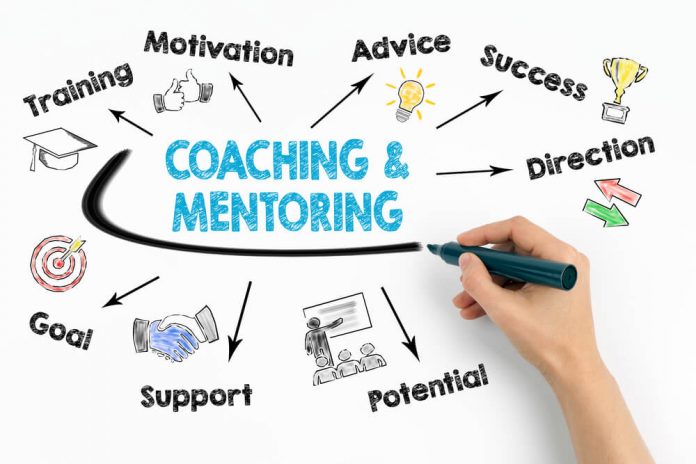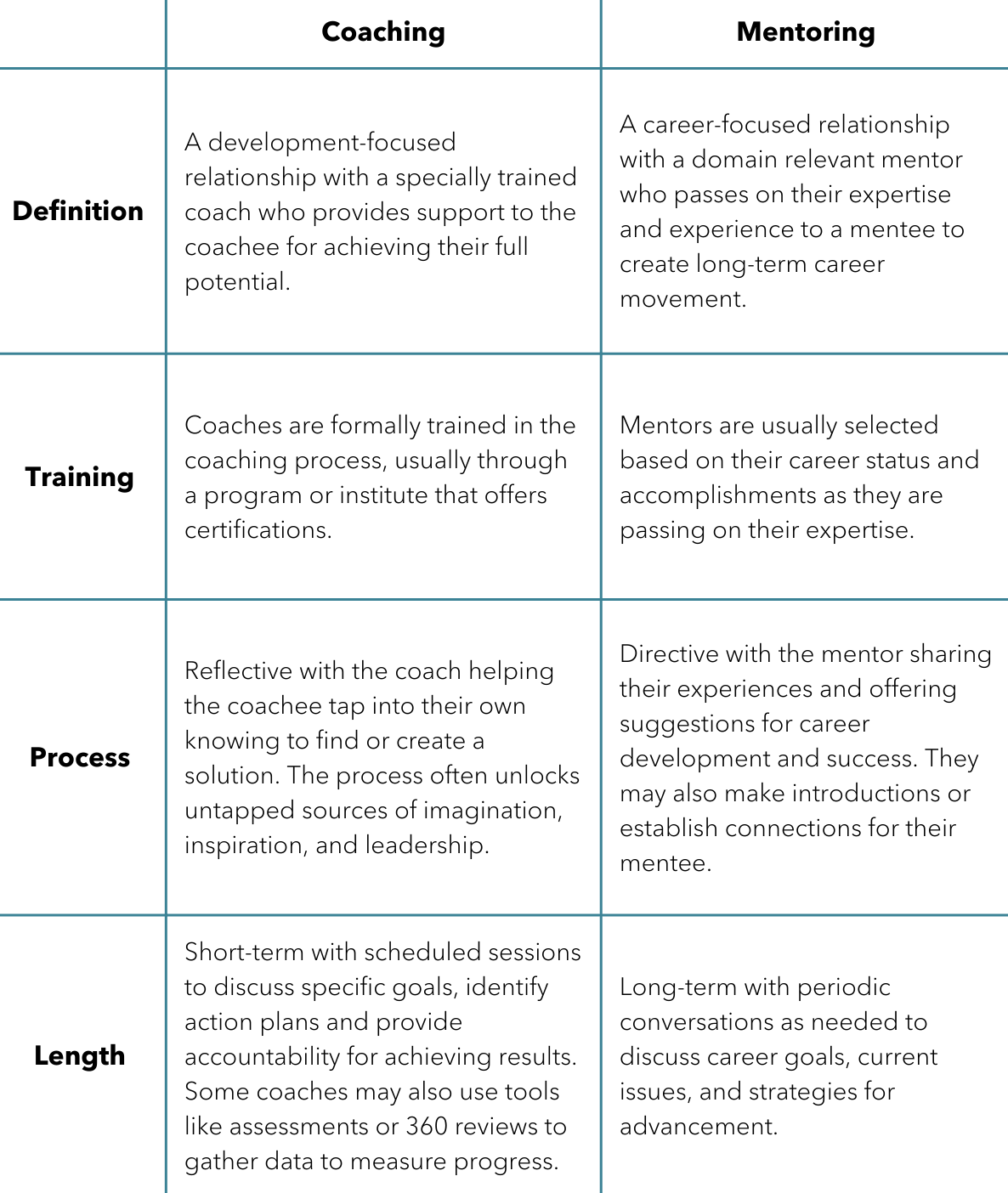
As the fierce competition to attract and retain talent continues, coaching and mentoring can provide a distinct advantage. Today’s workers are looking for organizations that care about them and invest in their growth and development.
Coaching and mentoring are different, but it’s easy to create robust programs for each. You can build your own program or partner with established providers. Either way, you’re likely to see a good return on investment (ROI) for your efforts. It will give you an advantage in this competitive hiring market and also up-level the skills of your current and incoming employees.
The Benefits
One study estimates that mentoring programs yield an ROI of 600 percent of the costs and increase the length of time employees stay with the organization. Employees typically see faster advancement and salary growth, as well as greater satisfaction with their organization and career. And organizations typically experience better employee recruitment and retention.
Coaching programs also yield great ROI. One global study found that nearly 90 percent of organizations made back their initial investment, 28 percent saw an ROI of 10 to 49 times their investment, and 19 percent indicated an ROI of 50 times the investment. The International Coaching Federation further shows that coaching increases productivity, including work performance, time management, business management, and team effectiveness. In addition, organizations with coaching cultures see more positive people with improved self-confidence, communication skills, relationships, and work/life balance.
Mentoring vs. Coaching
While related, mentoring and coaching have key differences. Mentors are more experienced and successful professionals in the same field who meet with their mentees to share their knowledge and experience. The goal is for long-term career development, with the mentor guiding and assisting the mentee in achieving their career goals. Historically, mentors have been within the same organization, but modern programs create matches across organizations and even relevant industries. The mentor’s role is more directive, talking with the mentee to pass on their wisdom and insights.
On the other hand, coaches are specially trained and certified to help the coachee maximize their potential. The engagement is usually shorter term, with sessions focused on setting and achieving specific goals through action plans. Coaches use a reflective process, asking questions designed to help the coachee tap into their own wisdom to develop their solutions.
While the term, “coaching,” often is confused with training, mentoring, or consulting, true coaching is about supporting people in achieving their potential—it’s positive and forward-moving. Coaching includes honest feedback and accountability, as well as strategies to help people overcome roadblocks to achieve better performance.
This table further details the similarities and differences.

Your organization likely will benefit from both mentoring and coaching, and many organizations create or contract both programs to offer a broader range of support to their employees. To ensure the most success, be sure you engage formally trained and certified coaches, and provide clear expectations for mentors. Because they hold positions of power, it’s wise to articulate where and when mentoring should occur.
Create a Culture of Coaching
Coaching is about creating a high-performance culture, not managing a low-performance one. There are many ways to create a culture of coaching. One way is to leverage the expertise that already exists within your organization. For example, tools such as Imperative generate a structure and process for peer coaching across your organization, while Bongo uses video assignments to enhance coaching and feedback.
Another option is to hire coaching providers to support your workforce. Some examples include BetterUp, GrowthSpace, and Everwise. Making coaching available to all levels of your workforce upskills everyone, making your organization more resistant to the “Great Resignation” and more prepared for any future.
Perhaps your most powerful and affordable option is to train your managers and leaders to be coaches. With practice, they can infuse great coaching into everything they do.
Managers are the single most influential relationship any of your employees will have at your organization. Gallup found that managers account for 70 percent of the variance in employee engagement, and 84 percent of workers say poorly trained managers create unnecessary stress. Half of employees feel their own performance would improve if their boss received the right kind of manager training.
Coaching Styles
There are two primary coaching styles all managers should use: skills and clarity. Managers should use both types together, like sliding scales, shifting the percentages to match the employee’s stage of professional development and helping them progress to the next level of their growth.
Skills coaching is similar to mentoring. It’s intentionally directive as the manager transfers their knowledge, experience, and expertise through training sessions and conversations. There are several tools managers can use, including teaching or training sessions; demonstration and opportunities for observational learning; SMART goals; appropriate recognition and rewards; and deliberate practice with feedback.
Clarity coaching is ideal for more experienced employees and high performers. Clarity coaching uses a series of questions (the most common framework is the GROW model) to help employees tap into their own sense of knowing, further building their self-confidence and competence. This style consistently motivates and engages employees. Also, change sticks because employees design their own path forward, so they have full ownership of the process and results.
Managers will tell you that most of their time is taken up answering employee questions. Clarity coaching consistently builds problem-solving skills that transfer to the employee’s day-to-day work, where they begin to coach themselves and reduce the need for manager input. This frees up your managers to focus on achieving your organization’s strategic priorities.
The evidence is clear—launching coaching and mentoring programs yield many positive outcomes. Initial costs are quickly replaced with an uptick in critical business metrics such as productivity, engagement, and retention. Your efforts will strongly benefit your organization as you upskill your workforce, create better managers and leaders, and become an employer of choice for top-performing talent.


